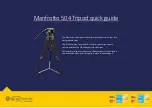
Harness User’s manual
S
UP’AIR
_
PIXAIR
Page 26
Care
Harness cleaning and maintenance.
It is a good idea to clean your harness from time to time. We recommend using a brush and soft solvents only ( soap or mild cleaning agents ).
Rinse thoroughly. Never use aggressive chemicals such as strong solvents which could be harmful to the fabric, webbings, stitching and weaken the
overall integrity of the harness.
Life-span
The threads and fabric used to manufacture the PIXAIR were specifically selected for their quality and resilience capacities. However in particular
instances such as long term UV exposure abrasion, contact with damaging chemicals, general wear and tear, the harness will need to be inspected
at a professional certified repair facility. Safety comes first!
The zippers should be lubricated from time to time using a silicon spray.
If you regularly use your harness in a dusty environment ( dirt sand etc... ) we advise you to regularly check and maintain your carabiners and
buckles : clean them with a mild detergent then blow-dry them fully but DO NOT LUBRICATE !
Prior to using them conduct a thorough carabiners and buckles checkup to insure their full functionality.
If you use your harness in a marine/sandy/salty environment pay particular attention to your gear and follow a regular rigorous maintenance routine.
The self-locking carabiners are NEVER to be used for any activities other than paragliding.
Storage and transport.
When not in use your harness should be stored inside your paragliding backpack in a dry cool and clean place protected from UV exposure. If your
harness is wet please dry it thoroughly before stowing it away.
Once every two (2) years a thorough harness inspection must be conducted :
• Webbing wear and tear (no excessive wear nor rip beginning or unwanted folds).
• Buckles and carabiners ( functionality wear and tear ).
• The AIRBAG’s integrity ( especially after a strong impact ), in other words, no holes, tears or rips.
During transport protect the harness against mechanical or UV deterioration (use a bag). Avoid long transports in wet conditions.
Independently from the pre-flight procedure, deploy and vent your reserve parachute on the ground before repacking it. The procedure must be
done at least once a year.
If your air bag is damaged, have it professionally checked and repaired if necessary.





































